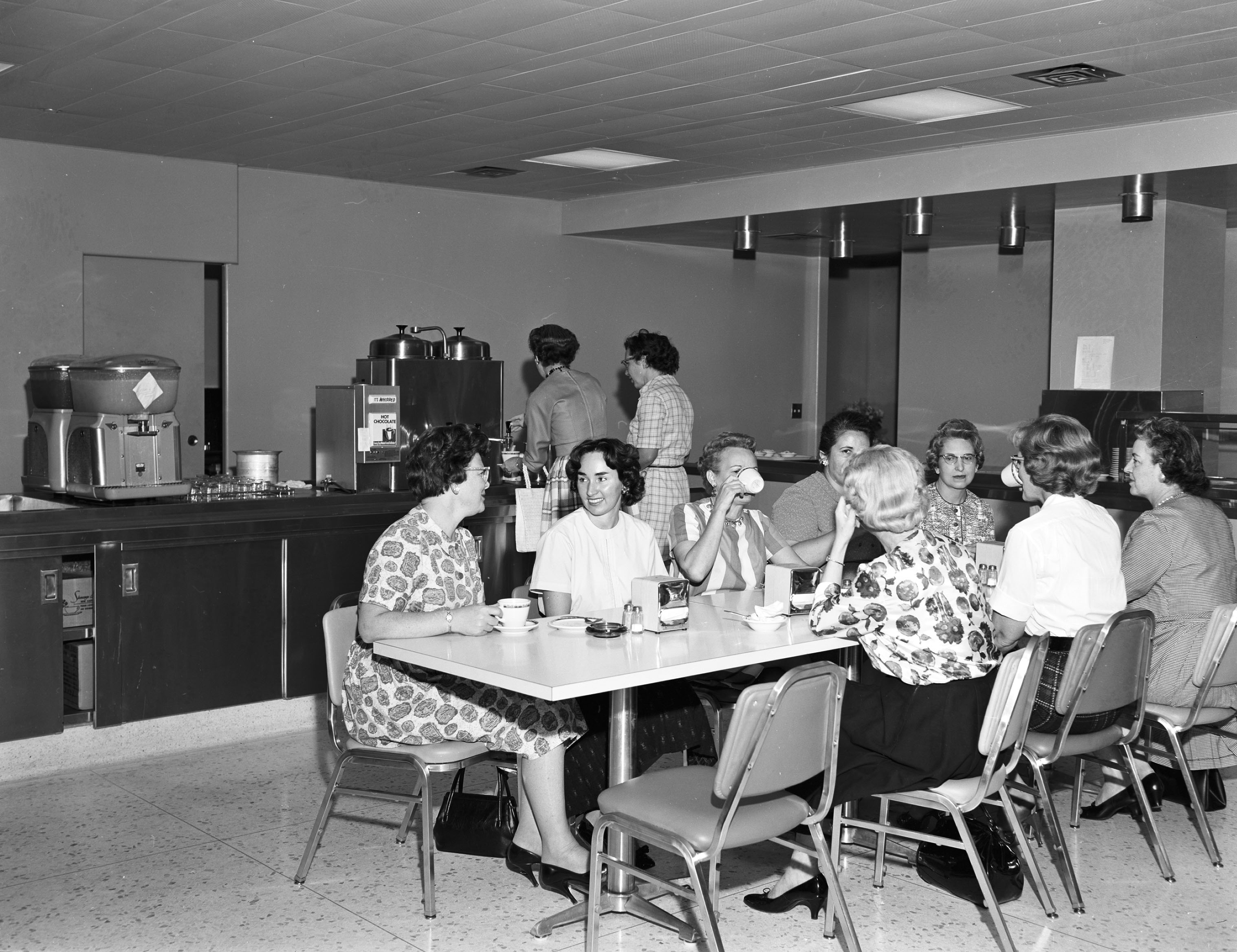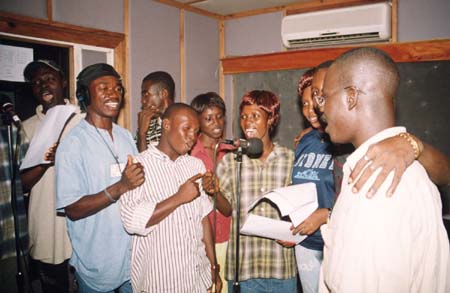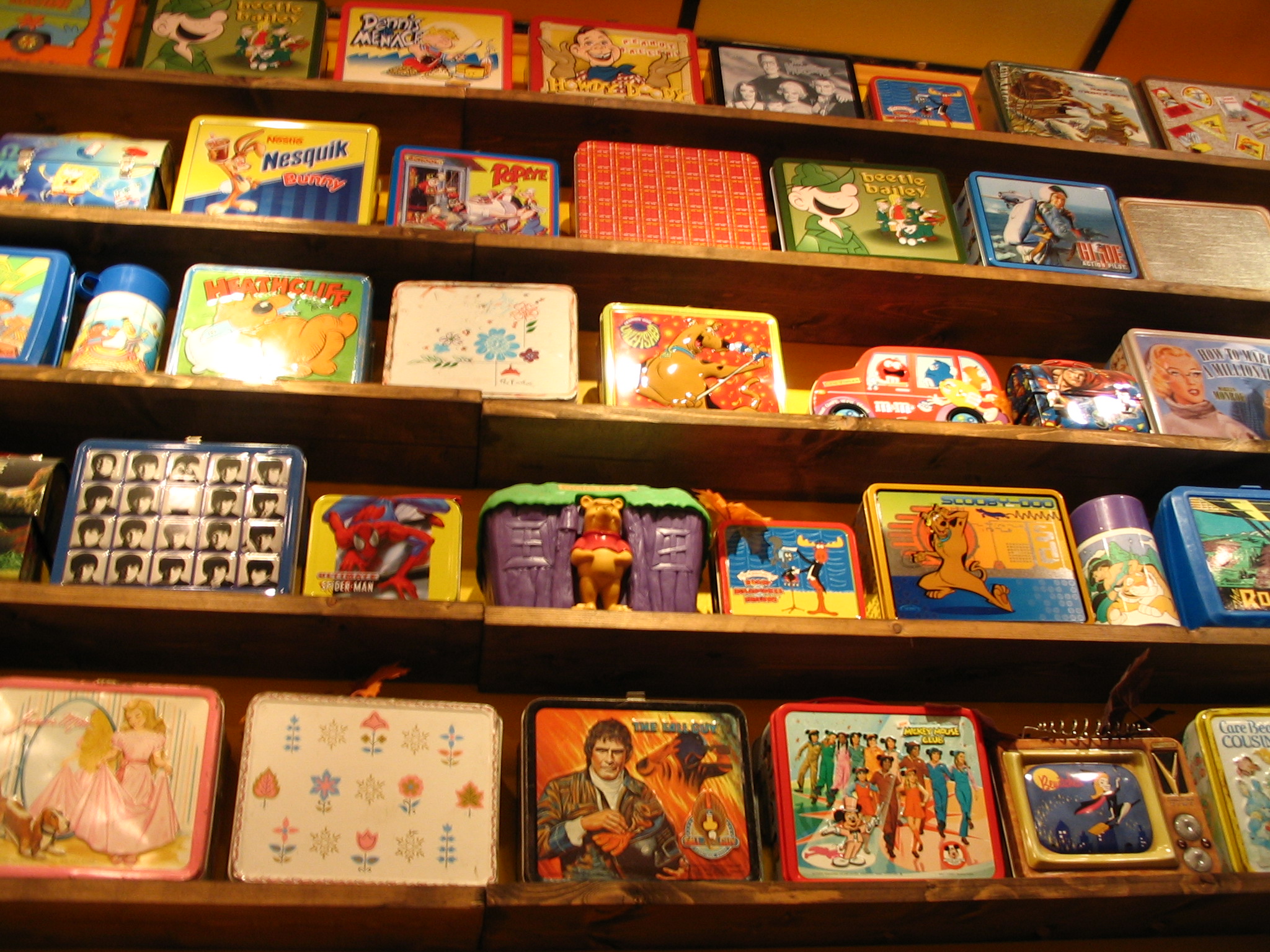|
Wolf And Sheepdog
Ralph Wolf and Sam Sheepdog are characters in a series of animated cartoons in the Warner Bros. ''Looney Tunes'' and ''Merrie Melodies'' cartoons. The characters were created by Chuck Jones. Ralph Wolf has virtually the same character design as another Chuck Jones character, Wile E. Coyote—brown fur, wiry body, and huge ears, but with a red nose in place of the Coyote's black one; (usually) white eyes instead of the Coyote's yellow ones; and, occasionally, a fang protruding from his mouth. He also shares the Coyote's appetite and persistent use of Acme Corporation products, but he covets sheep instead of roadrunners and, when he speaks (which is only in some cartoons, and even then usually only at the start and end of the cartoon), does not have the upper-class accent or the egotistical bearing of the Coyote. Another crucial difference is that of personality: Ralph does not have the fanatical drive of the Coyote in pursuing his prey; instead catching the sheep is only his weekd ... [...More Info...] [...Related Items...] OR: [Wikipedia] [Google] [Baidu] |
Looney Tunes
''Looney Tunes'' is an American Animated cartoon, animated comedy short film series produced by Warner Bros. starting from 1930 to 1969, concurrently with its partner series ''Merrie Melodies'', during the golden age of American animation.Looney Tunes . ''www.bcdb.com'', April 12, 2012 Then some new cartoons were produced from the late 1980s to the mid 2010s as well as other made productions beginning in 1972. The two series introduced a large List of Looney Tunes and Merrie Melodies characters, cast of characters, including Bugs Bunny, Daffy Duck, and Porky Pig. The term ''Looney Tunes'' has since been expanded to also refer to the characters themselves. ''Looney Tunes'' and ''Merrie Melodies'' were initially produced by Leon Schlesinger and animators Harman and Ising, Hugh Harman and Rudolph Ising from 1930 to 1933. [...More Info...] [...Related Items...] OR: [Wikipedia] [Google] [Baidu] |
Roadrunner
The roadrunners (genus ''Geococcyx''), also known as chaparral birds or chaparral cocks, are two species of fast-running ground cuckoos with long tails and crests. They are found in the southwestern and south-central United States and Mexico, usually in the desert. Although capable of flight, roadrunners generally run away from predators. On the ground, some have been clocked at while a few have also been clocked up to . Species The subfamily Neomorphinae, the New World ground cuckoos, includes 11 species of birds, while the genus ''Geococcyx'' has just two: Morphology The roadrunner generally ranges in size from from tail to beak. The average weight is about . The roadrunner is a large, slender, black-brown and white-streaked ground bird with a distinctive head crest. It has long legs, strong feet, and an oversized dark bill. The tail is broad with white tips on the three outer tail feathers. The bird has a bare patch of skin behind each eye; this patch is shaded blue ... [...More Info...] [...Related Items...] OR: [Wikipedia] [Google] [Baidu] |
Ready, Woolen And Able
''Ready, Woolen and Able'' is a 1960 Warner Bros. ''Merrie Melodies'' cartoon directed by Chuck Jones. The short was released on July 30, 1960, and stars Ralph Wolf and Sam Sheepdog. Mel Blanc provided for the voices of all the characters in this cartoon; however, like all Ralph Wolf and Sam Sheepdog shorts, this short is mostly composed of visual gags. That is the fifth short featuring Ralph Wolf and Sam Sheepdog. The title is a play on the phrase "ready, willing and able". Plot Like all Ralph Wolf and Sam Sheepdog shorts, this one revolves around Ralph Wolf trying to steal the sheep which Sam Sheepdog is guarding. The short begins with a juxtaposition of how Sam and Ralph get to work. Sam takes a leisurely drive to work in what appears to be a caricature of a shoddy Ford Model T. Behind him, Ralph speeds past in a drag racer. After Ralph hastily parks and walks away, Sam pulls into his spot, careful to make the correct hand signals as he turns. 1. As soon as the whistle blo ... [...More Info...] [...Related Items...] OR: [Wikipedia] [Google] [Baidu] |
Steal Wool
''Steal Wool'' is a 1957 Warner Bros. ''Looney Tunes'' cartoon directed by Chuck Jones. The short was released on June 8, 1957, and stars Ralph Wolf and Sam Sheepdog. Mel Blanc provided for the voices of all the characters in this cartoon; however, like all Ralph Wolf and Sam Sheepdog shorts, this short is mostly composed of visual gags. This is the fourth short featuring Ralph Wolf and Sam Sheepdog. The title is a play on steel wool. Plot Like all Ralph Wolf and Sam Sheepdog shorts, this one revolves around Ralph Wolf trying to steal the sheep which Sam Sheepdog is guarding. Sam wakes up to his alarm and presses it harshly before it goes back to its original position. As he is leaving the house with his lunch box, he tosses a newspaper in front of Ralph's door and he comes out eating a doughnut. The two co-workers cordially bid each other good morning. 1. Ralph's first plan is to sneak under a sheep and carry it off, wearing it as a disguise. When Ralph is caught by Sam, he at ... [...More Info...] [...Related Items...] OR: [Wikipedia] [Google] [Baidu] |
Double Or Mutton
''Double or Mutton'' is a 1955 Warner Bros. ''Looney Tunes'' cartoon directed by Chuck Jones. The short was released on July 23, 1955, and is the third cartoon featuring Ralph Wolf and Sam Sheepdog. Mel Blanc provided for the voices of all the characters in this cartoon; however, like all Ralph Wolf and Sam Sheepdog shorts, this short is mostly composed of visual gags. The title is a play on the gambling wager double or nothing. This is also the first short where it is clearly established that Sam and Ralph are coworkers, as well as the first short where their names are consistent. Plot ''Introduction:'' Like all Ralph Wolf and Sam Sheepdog shorts, this one revolves around Ralph Wolf trying to steal the sheep which Sam Sheepdog is guarding. 1. As in the previous two shorts, Ralph attempts to steal some sheep by burrowing under the field. After finding Sam waiting for Ralph above one of his holes, Ralph attempts to look innocuous, but Sam hits him over the head with a large woo ... [...More Info...] [...Related Items...] OR: [Wikipedia] [Google] [Baidu] |
Sheep Ahoy
''Sheep Ahoy'' is a 1954 Warner Bros. '' Merrie Melodies'' cartoon directed by Chuck Jones. The short was released on December 11, 1954, and stars Ralph Wolf and Sam Sheepdog. Mel Blanc provided for the voices of all the characters in this cartoon, however, like all Sam Wolf and Ralph Sheepdog shorts, this short is mostly composed of visual gags. This is the second short featuring Ralph Wolf and Sam Sheepdog. The title is a play on the phrase "Ship ahoy!" Plot This story revolves around Ralph Wolf (here named George) trying to steal the sheep guarded by Sam Sheepdog (here called Fred), who has just exchanged shifts with co-worker Fred Sheepdog (here called Ralph). As Ralph runs off with a sheep, Sam pushes a rock over the ledge, which falls on the wolf's head. Ralph promptly lets the sheep go before falling over in a daze, a lump consequently growing on his head. # Ralph first attempts to drop a large boulder on Sam, but a tree branch catches the boulder and propels it upward ... [...More Info...] [...Related Items...] OR: [Wikipedia] [Google] [Baidu] |
Lunch Break
A break at work (or work-break) is a period of time during a shift in which an employee is allowed to take time off from their job. It is a type of downtime. There are different types of breaks, and depending on the length and the employer's policies, the break may or may not be paid. Meal breaks, tea breaks, coffee breaks, or lunch breaks usually range from ten minutes to one hour. Their purpose is to allow the employee to have a meal that is regularly scheduled during the work day. For a typical daytime job, this is lunch, but this may vary for those with other work hours. Lunch breaks allow an employee's energy to replenish. It is not uncommon for this break to be unpaid, and for the entire work day from start to finish to be longer than the number of hours paid in order to accommodate this time. Break laws Modern break laws in the United States stem from labor laws passed between 1935 and 1974. It was during this time that jobs in the U.S. modernized and the country's ... [...More Info...] [...Related Items...] OR: [Wikipedia] [Google] [Baidu] |
Voice Actor
Voice acting is the art of performing voice-overs to present a character or provide information to an audience. Performers are called voice actors/actresses, voice artists, dubbing artists, voice talent, voice-over artists, or voice-over talent. Voice acting is recognised as a specialized dramatic profession in the United Kingdom, primarily due to BBC broadcasts of radio drama production. Examples of voice work include animated, off-stage, off-screen or non-visible characters in various works such as feature films, dubbed foreign-language films, animated films, anime, television shows, video games, cartoons, documentaries, commercials, audiobooks, radio dramas and comedies, amusement rides, theater productions, puppet shows and audio games. Voice actors are also heard through pre-recorded and automated announcements that are a part of everyday modern life in areas such as shops, elevators, waiting rooms and public transport. The role of a voice actor may involve singing, mos ... [...More Info...] [...Related Items...] OR: [Wikipedia] [Google] [Baidu] |
Time Card
Time is the continued sequence of existence and events that occurs in an apparently irreversible succession from the past, through the present, into the future. It is a component quantity of various measurements used to sequence events, to compare the duration of events or the intervals between them, and to quantify rates of change of quantities in material reality or in the conscious experience. Time is often referred to as a fourth dimension, along with three spatial dimensions. Time has long been an important subject of study in religion, philosophy, and science, but defining it in a manner applicable to all fields without circularity has consistently eluded scholars. Nevertheless, diverse fields such as business, industry, sports, the sciences, and the performing arts all incorporate some notion of time into their respective measuring systems. 108 pages. Time in physics is operationally defined as "what a clock reads". The physical nature of time is addresse ... [...More Info...] [...Related Items...] OR: [Wikipedia] [Google] [Baidu] |
Sleeping While On Duty
Sleeping while on duty or sleeping on the job – falling asleep while one is not supposed to – is considered gross misconduct and grounds for disciplinary action, including termination of employment, in some occupations. Recently however, there has been a movement in support of sleeping, or napping at work, with scientific studies highlighting health and productivity benefits, and over 6% of employers in some countries providing facilities to do so. In some types of work, such as firefighting or live-in caregiving, sleeping at least part of the shift may be an expected part of paid work time. While some employees who sleep while on duty in violation do so intentionally and hope not to get caught, others intend in good faith to stay awake, and accidentally doze. Sleeping while on duty is such an important issue that it is addressed in the employee handbook in some workplaces. Concerns that employers have may include the lack of productivity, the unprofessional appearance, a ... [...More Info...] [...Related Items...] OR: [Wikipedia] [Google] [Baidu] |
Time Clock
A time clock, sometimes known as a clock card machine or punch clock or time recorder, is a device that records start and end times for hourly employees (or those on flexi-time) at a place of business. In mechanical time clocks, this was accomplished by inserting a heavy paper card, called a time card, into a slot on the time clock. When the time card hit a contact at the rear of the slot, the machine would print day and time information (a timestamp) on the card. One or more time cards could serve as a timesheet or provide the data to fill one. This allowed a timekeeper to have an official record of the hours an employee worked to calculate the pay owed an employee. The terms Bundy clock, bundy clock, or just bundy''Bundy.'' (n.d.). ''Collins English Dictionary'' – Complete & Unabridged 10th Edition. Retrieved April 10, 2014, from Dictionary.com website: http://dictionary.reference.com/browse/bundy have been used in Australian English for time clocks. The term comes from br ... [...More Info...] [...Related Items...] OR: [Wikipedia] [Google] [Baidu] |
Lunch Pail
A lunch box (alt. spelling lunchbox) refers to a hand-held container used to transport food, usually to work or to school. It is commonly made of metal or plastic, is reasonably airtight and often has a handle for carrying. In the United States In the United States a lunchbox may also be termed a lunch pail, lunch bucket or lunch tin, either as single words or paired. The concept of a food container has existed for a long time, but it was not until people began using tobacco tins to carry meals in the early 20th century, followed by the use of lithographed images on metal, that the containers became a staple of youth, and a marketable product. It has most often been used by schoolchildren to take packed lunches, or a snack, from home to school. The most common modern form is a small case with a clasp and handle, often printed with a colorful image that can either be generic or based on children's television shows or films. Use of lithographed metal to produce lunch boxes ... [...More Info...] [...Related Items...] OR: [Wikipedia] [Google] [Baidu] |






